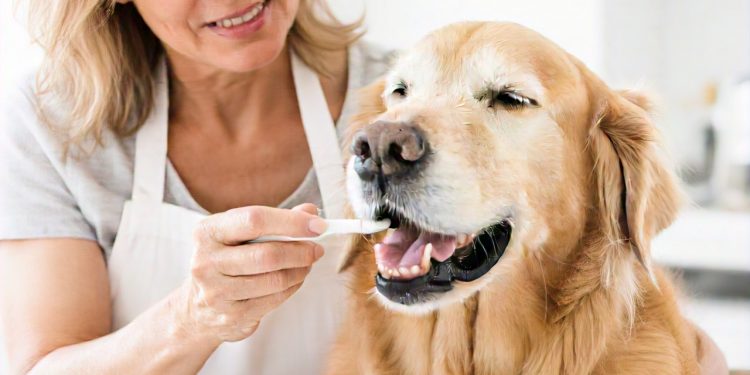Good oral hygiene is crucial for your dog’s overall health. Dental problems in dogs can lead to pain, infections, and other serious health issues, including heart, liver, and kidney problems. Here’s a comprehensive guide to keeping your dog’s teeth in top condition.
1. Brush Your Dog’s Teeth Regularly
Brushing your dog’s teeth is the cornerstone of their dental care routine. Use a dog-specific toothbrush and toothpaste, as human toothpaste can be toxic to dogs.
How Often Should You Brush?
- Ideally, brush daily.
- At a minimum, aim for 2-3 times a week.
Tips for Success:
- Start slowly to get your dog accustomed to the process.
- Reward them with praise or a small treat afterward.
2. Provide Dental-Friendly Dog Treats
Dental treats are designed to reduce plaque and tartar while giving your dog something enjoyable to chew. Look for treats approved by the Veterinary Oral Health Council (VOHC).
Examples of Dental Treats:
- Greenies
- Pedigree Dentastix
- Whimzees
These treats not only improve oral health but also freshen your dog’s breath.
3. Use Dental Chews and Toys
Chewing is a natural way for dogs to clean their teeth. Dental chews and toys can help scrape off plaque and stimulate gums.
What to Look For:
- Durable and safe materials.
- Products labeled specifically for dental health.
Avoid toys that are too hard, as they can cause tooth fractures.
4. Schedule Regular Veterinary Dental Checkups
Annual dental checkups are essential for early detection of issues like gum disease, infections, or loose teeth. During these visits, your vet may recommend professional cleaning.
Benefits of Professional Cleanings:
- Removal of tartar buildup.
- Prevention of gum disease.
- Thorough examination under anesthesia for a pain-free experience.
5. Feed a Dental-Healthy Diet
Certain types of dog food are formulated to promote oral health. Dry kibble, in particular, can help scrape plaque off teeth compared to wet food.
Dental Diet Recommendations:
- Prescription dental diets like Hill’s Prescription Diet t/d.
- High-quality, grain-free kibble.
Always consult your vet before switching your dog’s food.
6. Offer Raw Bones in Moderation
Raw bones can help scrape away tartar naturally while satisfying your dog’s chewing instincts. However, always supervise your dog to prevent choking or tooth damage.
Safe Practices:
- Choose raw bones, not cooked ones (cooked bones splinter easily).
- Size the bone appropriately for your dog.
7. Use Water Additives
Dental water additives are a convenient way to fight bacteria and freshen your dog’s breath. Simply add the recommended amount to their water bowl daily.
Features to Look For:
- VOHC-approved additives.
- Alcohol-free formulas to avoid irritation.
8. Monitor Your Dog’s Oral Health at Home
Regularly check your dog’s mouth for signs of dental problems. Early detection can prevent more severe issues.
Signs to Watch For:
- Bad breath.
- Red or swollen gums.
- Difficulty eating or chewing.
- Excessive drooling.
If you notice any of these symptoms, contact your vet immediately.
9. Avoid Harmful Chewing Habits
Not all chews are created equal. Avoid items like hard plastic bones or antlers, which can cause tooth fractures.
Alternatives to Avoid:
- Cooked bones.
- Hard nylon toys.
- Ice cubes.
10. Practice Positive Reinforcement
Dental care can be challenging for dogs, but positive reinforcement makes the process easier. Reward good behavior with praise, playtime, or a favorite treat.
Tips for Success:
- Be patient and consistent.
- Make dental care a positive experience for your dog.
Conclusion
Maintaining your dog’s dental health is an essential part of responsible pet ownership. By incorporating these ten tips into your routine, you can ensure your furry friend enjoys a happy, healthy life free of dental issues.
Start small, be consistent, and consult your veterinarian for personalized advice. Your dog’s smile (and breath) will thank you!

























